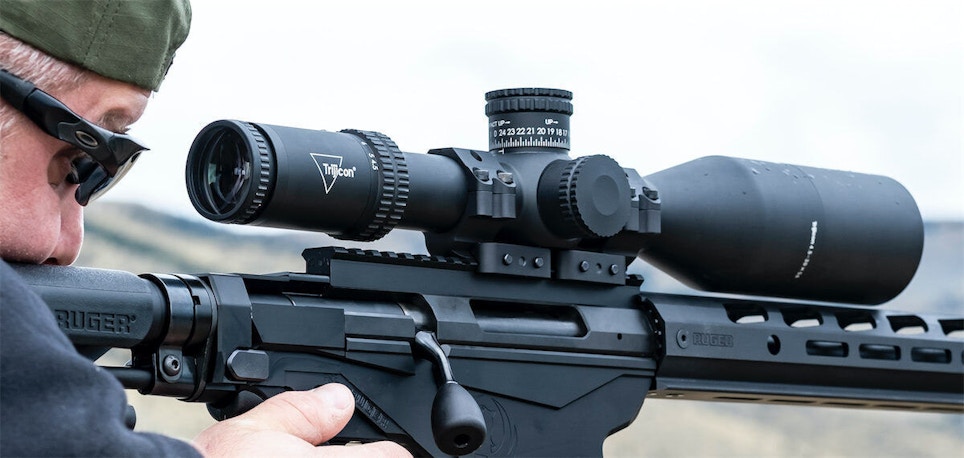Hunting and shooting optics serve a single purpose: to enhance the shooter’s ability to see and/or hit the target better.
Strategic thinking is in order here because, in such a category, it is possible to have units at one price point actually help to sell higher-priced, higher-margin units.
In the humdrum of daily business, it is easy to let things slip here and there as more urgent matters are handled. Although the urgent stuff must be addressed, a brighter future depends on strategic decisions made far before the actual sales. Like any product category, there are many things to think about when it comes to just how involved you want to be, because the options are seemingly endless and no one can stock it all.
Ultimately, the decision probably hinges on the confluence of product developments as they relate to the local customer base. And since a significant number of shooters travel to shoot and hunt, the predominant local applications don’t always dictate overall sales.
It is always wise to be cognizant of trends in the shooting sports industry because the hardcore, return customers are the ones who react to advertising and promotional hyperbole and buy the latest, greatest gear. Yet the one-time or casual buyer represents a significant segment of the overall customer base, as well.
What this suggests is that, within any product category, that the inventory should include price-based entry level models as well as at least intermediate to high-level gear. As much as it is preferable to be able to address the wants and needs of the most committed customers, it also is important to have options that allow for future up-sells.
Optics is one category where, generally speaking, price and quality levels are in tandem – the more it costs, the better it is. Granted, this is not always true, but it’s true enough that it represents a general rule of thumb.
Increasingly over recent years, long-range shooting has become a major trend in the shooting sports industry. There doesn’t exist a shooting activity that demands more and better optics than long-ranging.
For hunting, even when extreme range is not part of the game, the minimal optics ensemble consists of binoculars, riflescope and, in many instances, spotting scope. The hunter first must find the game animal, determine whether it is a shooter and then hit it.
For long-range shooting, minimal gear is the riflescope and spotting scope. Yet there are all kinds of attendant sales to these shooters for gear like wind meters, rangefinders, etc., but that’s another story.
This might suggest that inventory should focus primarily on rifle scopes and spotting scopes. But that could be misleading because binoculars represent universal usage far beyond just hunting and shooting. Binoculars justify their presence in other ways.
If the inventory represents low-, medium- and high-priced models of any of the kinds of optics, consider that, to at least some degree, the lower-priced models more or less sell themselves to those customers whose singular focus is on price. That level of optics needs to be there but doesn’t need the kind of sales focus that the midrange or high-grade models require.
The higher the price, the more challenging it is to make the sale to most customers. That’s because high-end buyers generally are more sophisticated and have preexisting ideas about what features and performance are needed to realize their dreams.
The proliferation of long-range gear has brought a host of both models and entire lines of optics at every imaginable price point. This is both positive and challenging. Features like complicated reticles, ranging adjustment knobs and even wireless connectivity to cell phones are now more commonplace than rare.
This means that features like field of view, magnification variables and the like fade in the overall conversation because similar features can be found throughout the price spectrum. Yet there are at least a couple of factors that can be inserted into upsell pitches and they are not some quantitative comparison of optical resolution because even the low-priced scopes have good enough resolution that most customers can’t tell the difference short of extended use in the real world — certainly not when inspecting a scope in the shop.
For such upsells, it makes sense to focus on at least two features: range of adjustment and physical robustness of the innards of the unit.
Range of adjustment tends to be a factor of main tube diameter — the bigger the main tube, the more adjustment. Although that is generally true, it is not definitionally correct because it is possible, in a larger-diameter main tube, to have innards that have only the adjustment range of thinner main tubes. Hence, compare the actual range of adjustment and that can make a significant difference for some customers.
Speaking of main tube diameters, here is an opportunity to add to the overall sales because, as main tubes tend to increase in size, there is a requirement for rings to fit them – ring sizes that few shooters have on inventory in their homes.
Back to the features of the scope. There are ways to take shortcuts when it comes to designing and manufacturing the inside mechanisms of scopes. Metal can be substituted with plastic for some parts, and mechanical connections can be replaced with glued parts.
Although such shortcuts don’t necessarily mean lower performance or shorter lifespan, they can be a factor and when the adjustment mechanisms in scopes come loose or break, it is game over until they are repaired or replaced. These kinds of things can quickly indicate that a better optic may be the better choice, even if it means spending considerably more money.
The point is that in the optics category, there are myriad product offerings but there are also almost endless ways to showcase, sell and upsell them.
The more successful customers are at pursuing their dreams, the more engaged they are. And the more engaged they are, the more they buy. Something to think about.





